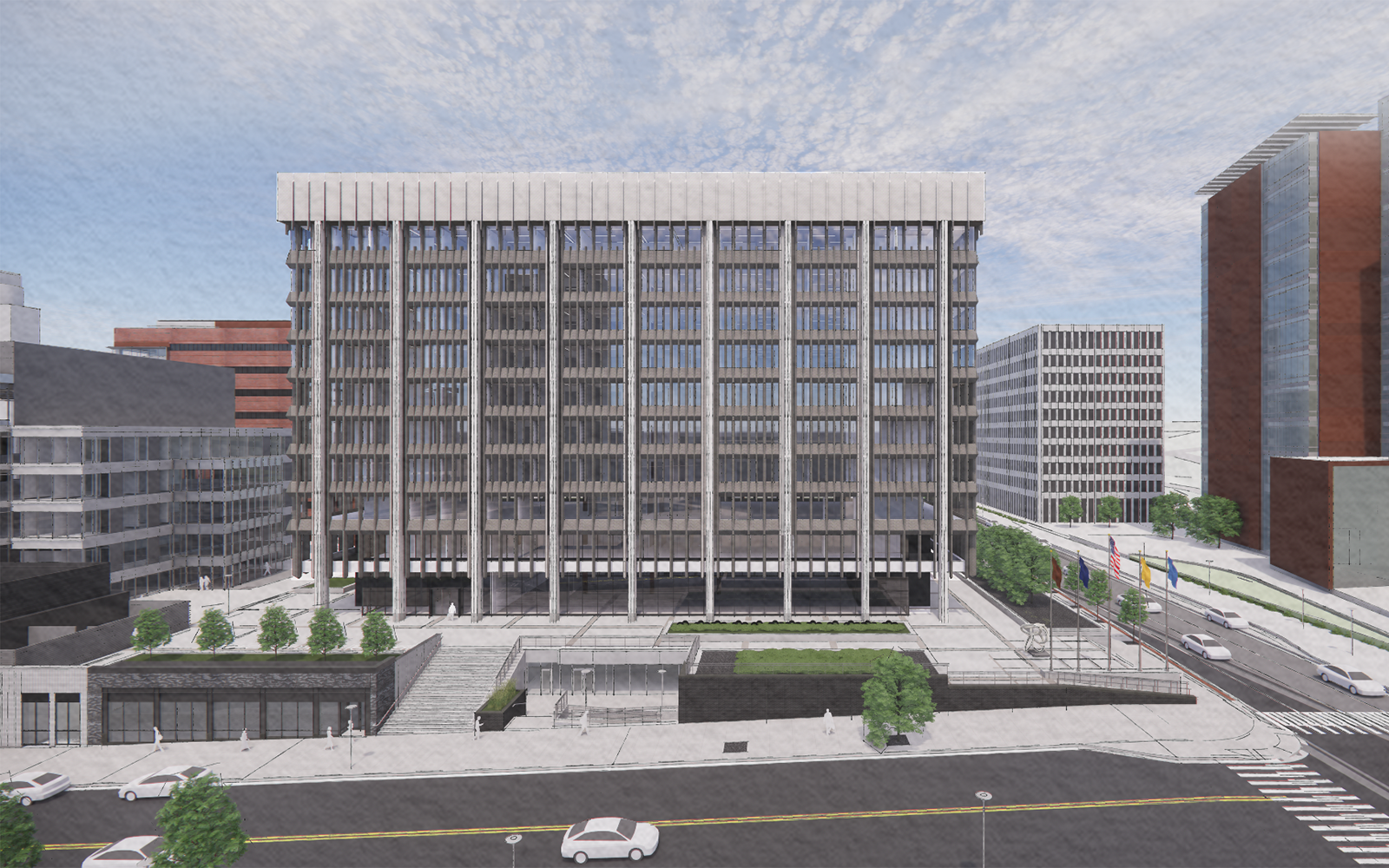Land
Home At The Office: Conversion Mojo Rises In Secondary Metros
Big cities dominate an emerging real estate trend: converting office buildings into much-needed residential space. Grand Rapids, MI, offers an economical and urban planning model that smaller cities can adopt.

Grand Rapids, Michigan, may not come instantly to mind as a likely candidate for repurposing a big 1960s-era modern office tower into new mixed-income housing.
Such projects tend to be in big cities with a lot of underused or empty office space and a glaring scarcity of affordable housing.
But Grand Rapids' first-ever office-to-residential project recently kicked off in its downtown, proof that even smaller cities can get in on the act when office space sits languishing and a need for housing becomes ever more pervasive.
CWD Real Estate Investment started converting a portion of a downtown Grand Rapids office building into 140 affordable apartment units.
Three Strike Outs, You're In
Sam Cummings, the firm’s managing partner, said they bought the building 10 years ago with a single intent: To attract a corporate headquarters.
We struck out three times,” Cumming said.
Then, the COVID-19 pandemic happened and changed the office environment everywhere. Cummings’ firm redid the retail portion on the building’s ground floor and secured tax incentives to make the apartment transformation work on the 1967 vintage building’s upper floors. Third National Bank will continue to occupy the lower floors.
The Rise of Conversions
During the pandemic, a confluence of factors created a better environment for converting existing office buildings into residential.
Office vacancies rose significantly, and their values fell, particularly for older ones. A housing shortage emerged as people shifted around in the remote work environment, hunting for more affordable places to buy or rent.
Big metropolitan areas dominating the trend for office buildings being converted to residential makes sense.
The top five cities for conversions in a RentCafe report — New York City, Washington, D.C., Los Angeles, Chicago and Dallas—have nearly 1.2 billion square feet of office space. And each of those cities has an above-average vacancy rate, ranging from 22% in D.C. to nearly 32% in downtown Los Angeles, according to commercial real estate firm Cushman & Wakefield.
However, that list also includes Omaha, Nebraska, and Bridgeport, Connecticut, two small metros comparable in size to the Grand Rapids metro.
Before the pandemic, office-to-apartment conversions happened rarely, best defined as a smattering of deals. This year, a record 70,700 office-to-apartment units are in the pipeline, according to RentCafe. While that total number and growth rate may sound dramatic, it’s just a tiny fraction of the overall office market.
Dan Niedich, CEO of Dune Real Estate Partners, said the national market is wide open for conversions to gain momentum, particularly in post-pandemic era downtowns where office building values have dropped low enough to justify a conversion.
“We think your total project costs are about 75% of what they would be for new construction, and that 25% discount in today's interest rate environment is mighty and compelling and allows transactions to work,” Neidich said. “Today, it's very difficult to do 'new build' because, between rates and costs, the numbers just don't work out.”
Dune Real Estate teamed up with TF Cornerstone, a company with a history of office conversions, to create a $1 billion venture called Alta Residential. Neidich said the investment could go to $5 billion because of the number of potential conversions.
The developer is considering converting a roughly 20-year-old office tower in New York City’s Midtown into apartments. He was not at liberty to disclose the location, but it is vacant and “not that recently; it was a successful office building,” Neidich said.
He said another potential deal would be a for-sale condo project elsewhere in New York City.
Creating Incentives to Entice Conversions
New York City, Los Angeles, San Francisco, Washington, D.C., and Seattle are among the cities trying to make it easier to convert office buildings to residential. Zoning changes combined with tax incentives have helped entice developers to choose conversions. Former President Joe Biden pushed for the conversion of office buildings into residential ones to help address housing shortages.
Much of the focus on housing shortages has been in the sunny southern states. But cold climate cities like Grand Rapids also are dealing with a shortage.
Under the category of everything being relative, Grand Rapids, a city of roughly 200,000 people, has a housing shortage. Housing Next, a regional housing organization, determined that Kent County, where Grand Rapids is located, will need 35,000 new housing units by 2027 to keep up with the area’s household growth.
The Grand Rapids metropolitan area’s population increased by nearly 29,000 between April 2020 and July 2024, according to Census data. Net international migration was the largest factor in the change, followed closely by natural change.
Only time will tell how the Trump Administration’s current immigration plan will affect the area over the next four years.
A change in Michigan law in 2023 helped make Cummings’ Grand Rapids conversion possible. The law allowed tax-increment financing (TIF) for housing development in brownfield areas.
The downtown project qualified and received $15.2 million in TIF to turn floors into one- and two-bedroom apartments. A condition is that 28 of the 140 units would need to be reserved for renters who make 100% of the area median income.
Cummings said he’s spent much of his career in Grand Rapids renovating and preserving buildings and wants to do more office-to-residential conversions.
“Candidly, I’m glad we struck out three times” on trying to land a corporate headquarters for the building, he said.
MORE IN Land
Steel, Skeptics, And The Real Innovators In U.S. Homebuilding
TBD MasterClass contributor Scott Finfer shares a brutally honest tale of land, failed dreams, and a new bet on steel-frame homes in Texas. It's not just bold — it might actually work.
Rachel Bardis: Building A New Blueprint For Community Living
A family legacy in homebuilding gave Rachel Bardis a foundation. Now, as COO of Somers West, she’s applying risk strategy, development grit, and a deep sense of purpose to Braden—an ambitious new master-planned community near Sacramento.
Florida Paradox: In-Migration Vs. Growing Signs Of An Exodus
Even as domestic migration cools, international migration is driving demand, and with it, there is pressure on land prices, baseline costs, and housing attainability.
